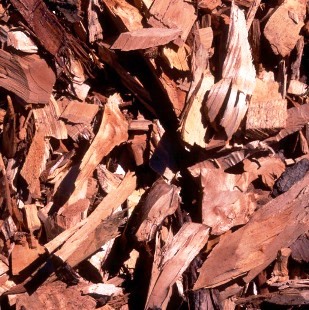 SEATTLE - Specially made wood chip carriers, predominantly built in Japan and China, are replacing older and smaller vessels. The new and larger ships carry overseas shipments, which account for about 70 percent of global wood chip trade, says Wood Resource Quarterly.
SEATTLE - Specially made wood chip carriers, predominantly built in Japan and China, are replacing older and smaller vessels. The new and larger ships carry overseas shipments, which account for about 70 percent of global wood chip trade, says Wood Resource Quarterly.
International trade of wood chips has steadily increased over the past decade and will likely reach a record high of approximately 36 million tons in 2014, according to the Wood Resource Quarterly (WRQ). This has occurred because pulp and wood panel production capacity has increased in regions with a lack of sufficient supply of domestic wood fiber at competitive costs, and between neighboring countries when opportunities exist for pulp mills to cross country borders in search of marginal wood fiber volumes. This type of inter-continental trade flow can be seen between the US and Canada, Russia and Finland, and the Baltic States with the Nordic countries.
However, as much as 70% of the global chip trade is overseas with the major consuming countries being in Asia. This trade, valued at over 4.5 billion dollars, is handled by vessels that are specially built for carrying wood chips. There are currently 145 of these specialty ships circling the globe with a majority of them either sailing towards or en route from ports in Japan or China.
The oldest chip vessels are from the 1980’s, but it is expected that within a few years the world’s entire woodchip fleet will be less than 20 years old, according to the wood chip ship-brokering firm Arc Chartering. Looking ahead towards 2017, the chip vessel fleet will not only be younger, but will also contain fewer ships, and the average ship will be bigger than in 2014.
Between 10-15 smaller older ships are likely to be scrapped in the next few years, while roughly 5-10 new larger vessels may be built during 2015-17. With a declining number of chip vessels traveling the seas, there are currently fewer spot shipments and a high utilization of the existing fleet.
Historically, wood chip carriers have been built in Japan for Japanese trading houses and forest companies. However, in recent years Chinese shipyards have also built large vessels for Chinese customers. Japanese companies currently own approximately 75% of the world’s chip vessels, while Chinese companies own about 14% of the fleet, while other countries such as South Korea, Turkey, Thailand and Indonesia account for the remaining 11%. The share of non-Japanese owned chip carriers is likely to increase in the coming years.
Global lumber, sawlog and pulpwood market reporting is included in the 52-page quarterly publication Wood Resource Quarterly (WRQ). The report, which was established in 1988 and has subscribers in over 30 countries, tracks sawlog, pulpwood, lumber and pellet prices, trade and market developments in most key regions around the world. To subscribe to the WRQ, please go to www.woodprices.com






Have something to say? Share your thoughts with us in the comments below.